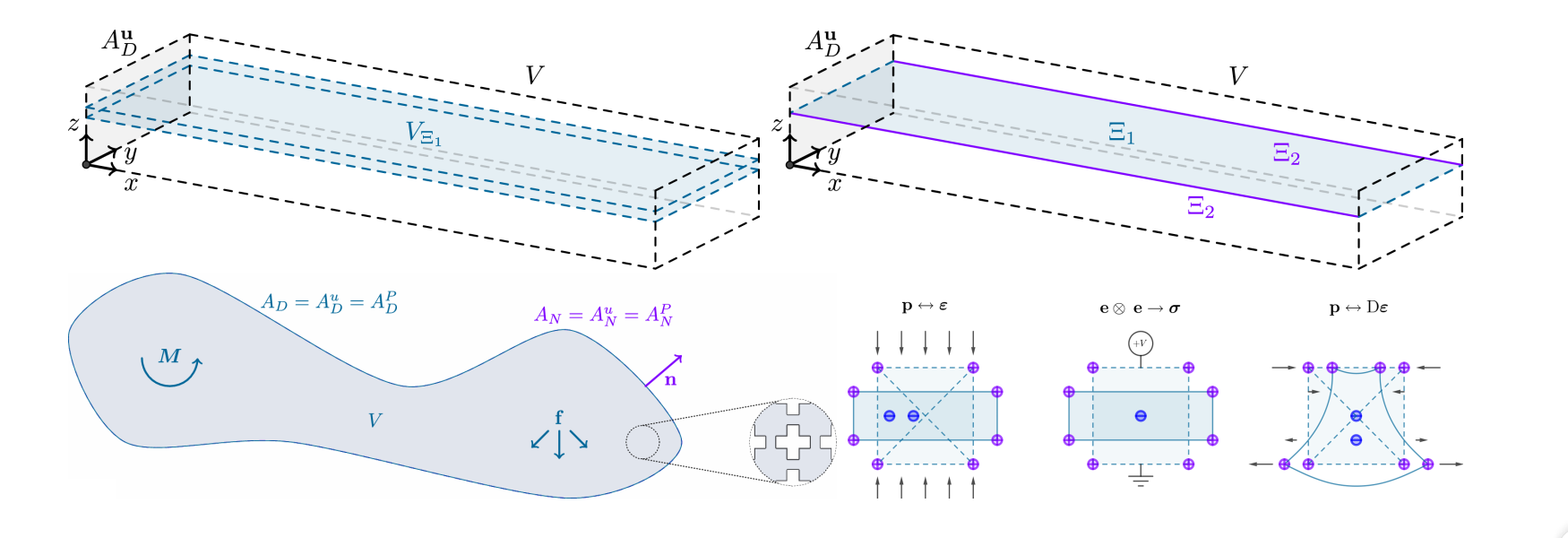Beginning with the Cosserat brothers’ micropolar continuum [2], extending through the micromorphic models of Eringen [3] and Mindlin [4], and culminating in Eringen’s gradient elasticity, research into generalised continua [5] spans more than a century. Originally, these models sought to unify mechanics, optics, and electrodynamics under a common principle of least action (Euclidean action). After lying dormant for about five decades, they were revived around 1950 and have recently experienced a renaissance, driven by interest in multi-scale phenomena [6], homogenisation [7], and multi-physics problems in electro-elasticity [1].
Where do these theories originate? Do they have physical meaning? What are their uses? This talk explores the origins, evolution, and modern applications of generalised continua.

References
[1] Codony, D., Mocci, A., Barcel´ o-Mercader, J., Arias, I.: Mathematical and computational modeling of flexoelectricity. Journal of Applied Physics 130(23), 231102 (2021)
[2] Cosserat, E., Cosserat, F.: Th´eorie des corps d´eformables. Nature 81(2072), 67–67 (1909)
[3] Eringen, A.: Microcontinuum Field Theories. I. Foundations and Solids. Springer-Verlag New York (1999)
[4] Mindlin, R.: Micro-structure in linear elasticity. Archive for Rational Mechanics and Analysis 16, 51–78 (1964)
[5] Neff, P., Ghiba, I.D., Madeo, A., Placidi, L., Rosi, G.: A unifying perspective: the relaxed linear micromorphic continuum. Continuum Mechanics and Thermodynamics 26(5), 639–681 (2014)
[6] Sky, A., Hale, J.S., Zilian, A., Bordas, S.P., Neff, P.: Intrinsic mixed-dimensional beam-shell-solid couplings in linear Cosserat continua via tangential differential calculus. Computer Methods in Applied Mechanics and Engineering 432,117384 (2024)
[7] Sky, A., Neunteufel, M., Muench, I., Sch¨ oberl, J., Neff, P.: Primal and mixed finite element formulations for the relaxed micromorphic model. Computer Methods in Applied Mechanics and Engineering 399, 115298 (2022)


